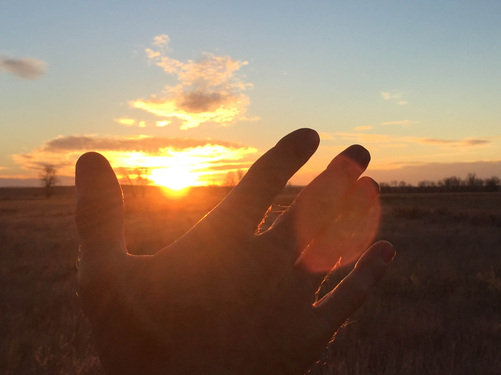As an adventurer and explorer of wild places, I live for the mystical moments when our connection to Earth—and indeed life itself—becomes more tangible. Encounters with the elements and beasts that are wilderness can take you unaware, strip you down to your instinctual self, call all your faculties and judgment into play, and force you to explore elements of yourself previously unearthed.
There are moments of transcendence I search out, and then there are moments that seem to find me. The American Prairie Reserve is full of both.
Winter on Sun Prairie demands respect. We are in tune with our environment because we have to be.
This is the first time in my life I’ve thought of 20-degree weather as “optimal.” But for us it is: If the temperature drops much closer to 0, my mustache freezes into icicles as I walk, and my shoulders and neck ache for miles in response to the slight drop in my body temperature. God forbid the temperature rise above 32, when the sun instills some facet of its gravity into the mud at our feet, and the gumbo mud threatens to swallow both us and our 4×4 Toyota Sequoia work vehicle whole.
But even the gumbo deepens our connection to the environment.
The sun has turned Indian Lake Road into a mud pit by early afternoon, and as we spin and slide the Toyota back toward the main road, I reflect on the physicality of the prairie. We rely on our instinct and judgment out here, and when that fails us, we get out and push.
Having grown up on the Kansas prairie, Trent Banks is no stranger to the vastness of the Great Plains. He now lives in Seattle, where he volunteers his time working with conservation groups on wildlife monitoring projects in wilderness areas throughout the region.




